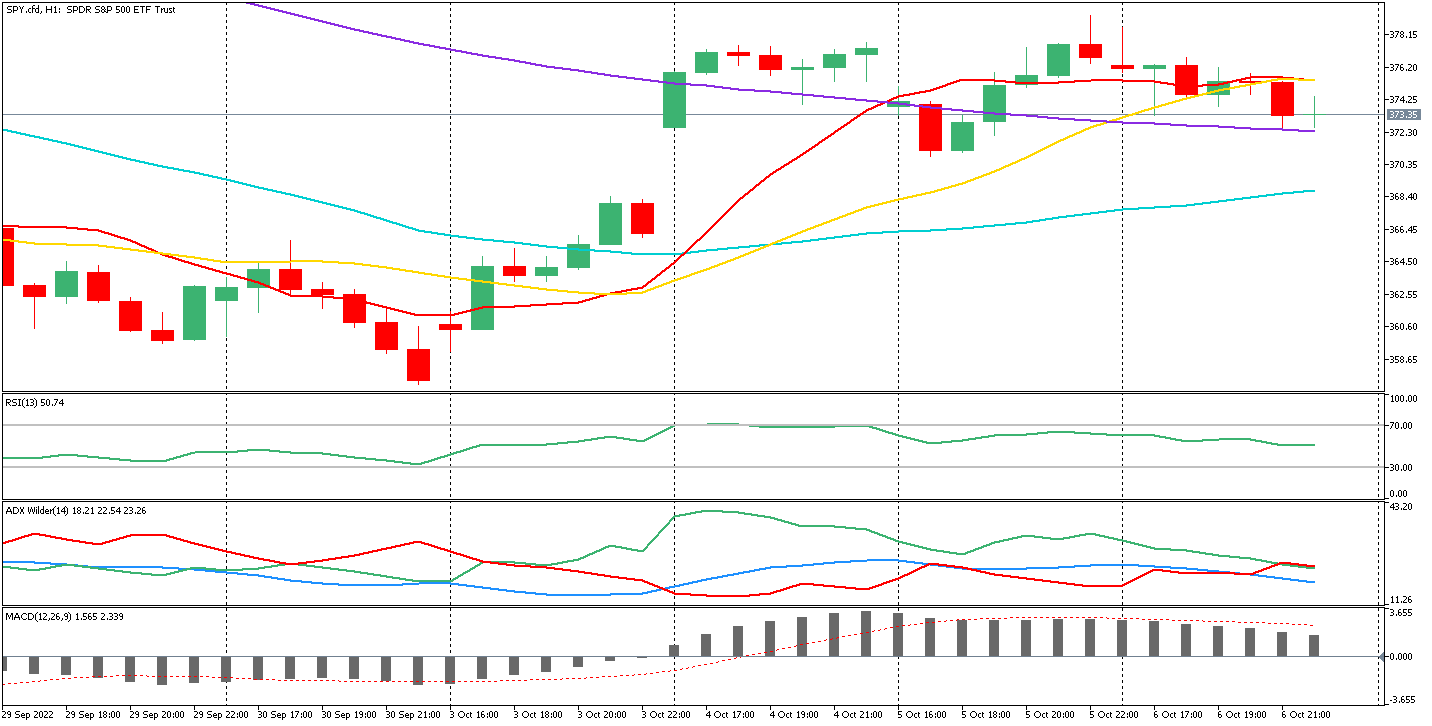Important data from the US labour market were released today, which has often been referred to by the Fed in deciding whether to raise interest rates in recent months, which may be due to the Federal Reserve's dual mandate (the Fed must look after inflation as well as the labour market).
Better-than-expected reading
In September 263,000 jobs were added against a forecast of 250,000, and the previous month's figure of 315,000. Thus, the readings may have again surprised positively and did not confirm the wave of unemployment that investors may have expected due to the worsening economic situation. The US unemployment rate came in at 3.5% against consensus and the previous figure of 3.7%.
How is the market reacting?
Investors seem to be expecting a continuation of strong interest rate rises and a consequent deterioration in the situation of companies, selling off equities. At 15:00 GMT+2 before the market open, the SPY (S&P 500) and QQQ (Nasdaq Composite) were losing 1.13 and 1.63% respectively.
Just a few days ago, we witnessed the best trading session since the post-pandemic bull market. Investors then seemed to be counting on a Fed pivot, a turnaround in the currently ongoing monetary tightening cycle. Now, more black clouds appear to be gathering over investors in the form of continued strong statements from FOMC (Federal Open Market Committee) members and a strong labour market, which could increase the chances of a 75 basis point hike in November.
SPY, hourly candles

US labour market after the pandemic
Following the outbreak of the Covid-19 pandemic, global economies faced rapidly rising unemployment. In the United States, at its peak in April 2020, unemployment stood at 14.7%. Thanks to the stimulation of the economy, remote working and a surge in labour demand after the opening up of the economy, unemployment quickly declined to a low of 3.5 % in July. This result was repeated in September.
A deteriorating labour market?
There has long been talk of a deteriorating economic outlook in the US, which is already in a technical recession, having achieved negative GDP growth for two quarters in a row. The condition of the labour market, however, is one of the latest reacting areas of the economy. This is mainly due to a reluctance to lay off workers and hold back on recruitment. Therefore, companies usually seem to lay off employees relatively late, when they are forced to do so by the weak economic environment.
Rafał Tworkowski, Junior Market Analyst, Conotoxia Ltd. (Conotoxia investment service)
Materials, analysis and opinions contained, referenced or provided herein are intended solely for informational and educational purposes. Personal opinion of the author does not represent and should not be constructed as a statement or an investment advice made by Conotoxia Ltd. All indiscriminate reliance on illustrative or informational materials may lead to losses. Past performance is not a reliable indicator of future results.


